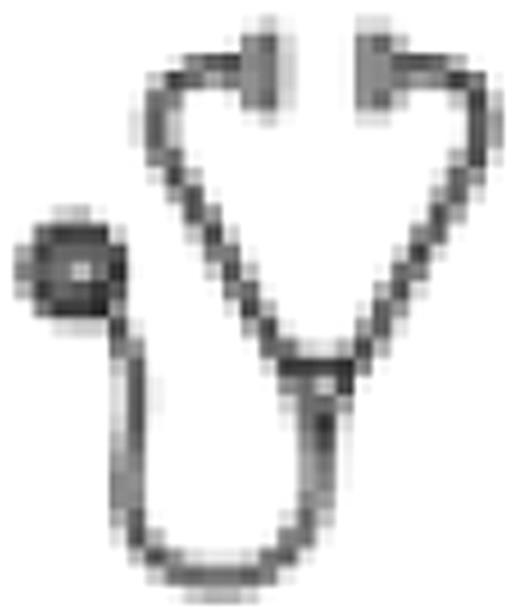Abstract
Abstract 3529
Hematologic malignancies in older patients are often characterized by resistant phenotypes which would ideally be treated by allogeneic hematopoietic stem cell transplant (HSCT). However, allogeneic HSCT in this age group is associated with greater regimen-related toxicity than in younger patients limiting its application. In addition, older patients have a smaller matched related donor pool due to the age and comorbidities of their siblings, but often have haploidentical offspring donor options.
In order to extend the application of HSCT to older patients (>66), we developed a reduced intensity regimen utilizing haploidentical donors. In this approach, donor T cells and CD 34+ cells are infused at 2 separate times so that the dose and timing of each cell type can be independently controlled. This “break apart” method allows the tolerization of donor T cells by cyclophosphamide (CY) without exposure of the donor HSCs to the drug. Seventeen patients ages 66–77 with AML (9), advanced MDS (2), biphenotypic leukemia (1), CLL (2), NHL (2), and myelofibrosis (1) were treated. All but 2 patients had persistent disease at the time of HSCT. Ten of 17 had a Karnofsky Performance Score (KPS) of >90%, while 7 patients' KPS was 70–80%. The hematopoietic cell transplantation comorbidity index (HCT CI) for the group was between 0 and 5 points. Time from first treatment to HSCT was widely variable.
The patients received fludarabine 30 mg/m2/d and cytarabine 2 Gms/m2/d on days -11 through -8. Thiotepa 5 mg/m2/d on days -11 to -9 was substituted for cytarabine in patients with active myeloid malignancies at HSCT. TBI (2 Gy) was given on d-6 immediately followed by 2 ×10e8/kg of the donor's T cells (DLI step). This T cell dose was associated with consistent engraftment and acceptable rates of GVHD in our prior studies. CY 60 mg/kg/d was given on days -3 and -2. A CD34 selected donor product was infused on day 0 (HSC step). T cells were collected from the donors prior to the start of G-CSF for stem cell mobilization. Mycophenolate Mofetil and Tacrolimus were started on d-1.
All patients received the targeted T cell dose of 2×10e8 cells/kg, and within 24 hours developed fevers (median peak temperature 103.8f), and in many cases diarrhea and rash. All of the symptoms from this alloreaction resolved after the 2nd dose of CY. The median CD34+/kg dose was 3.34 × 10e6/kg (range 1.4–8.94 × 10e6/kg). The median amount of residual (non-tolerized) T cells in the HSC product was 0.24 × 10e4/kg (range 0.03–4.5 × 10e4/kg). One patient developed hypotension during the alloreaction requiring steroids. There were no other unexpected infusion-related reactions. Five patients developed decreases in ejection fraction (EF), not always associated with clinical heart failure, and 5 patients developed atrial dysrhythmias. Two early deaths occurred from sepsis and decreased EF on days +2 and +11, both in patients with KPS of 70–80% but with HCT-CI scores of <3 at the time of transplant. Fourteen of 17 (82%) patients were discharged to home and one (6%) to a skilled nursing facility. After discharge, one patient experienced a late rejection and died of toxicity from a second HSCT. Two patients died from severe GVHD (liver and gut) on days +161 and +90. The remaining patients had grade 0 to II GVHD controlled either with steroids or steroids plus photopheresis. One patient died from pneumonia on day +177. Four patients died from relapsed disease on days +55, +186, +198, and +510. Seven total patients (41%) are alive and without evidence of disease 1 to 30 months (median 19 months) after HSCT. All but 1 of these patients had a KPS of > 90% at transplant and all surviving patients had HCT CI scores of <3. Three of 3 patients with HCT CI scores >3 have died. The only 2 patients without active disease at HSCT are both alive, 19 and 26 months post HSCT. Except for the most recently treated patient who is not yet evaluable, all of these older patients have resumed their baseline activities of daily living.
Haploidentical RIC using this 2 Step protocol is a viable treatment option for older adults. Rates of significant GVHD were acceptable and the majority of patients were able to tolerate the transplant procedures and be discharged to their homes. Based on the outcomes of this small group of patients, this type of therapy should be offered to fit senior adults with a low co-morbidity index especially if they have achieved a complete remission with up front therapy but are at high risk for relapse in the absence of HSCT.
No relevant conflicts of interest to declare.

This icon denotes a clinically relevant abstract
Author notes
Asterisk with author names denotes non-ASH members.

This feature is available to Subscribers Only
Sign In or Create an Account Close Modal